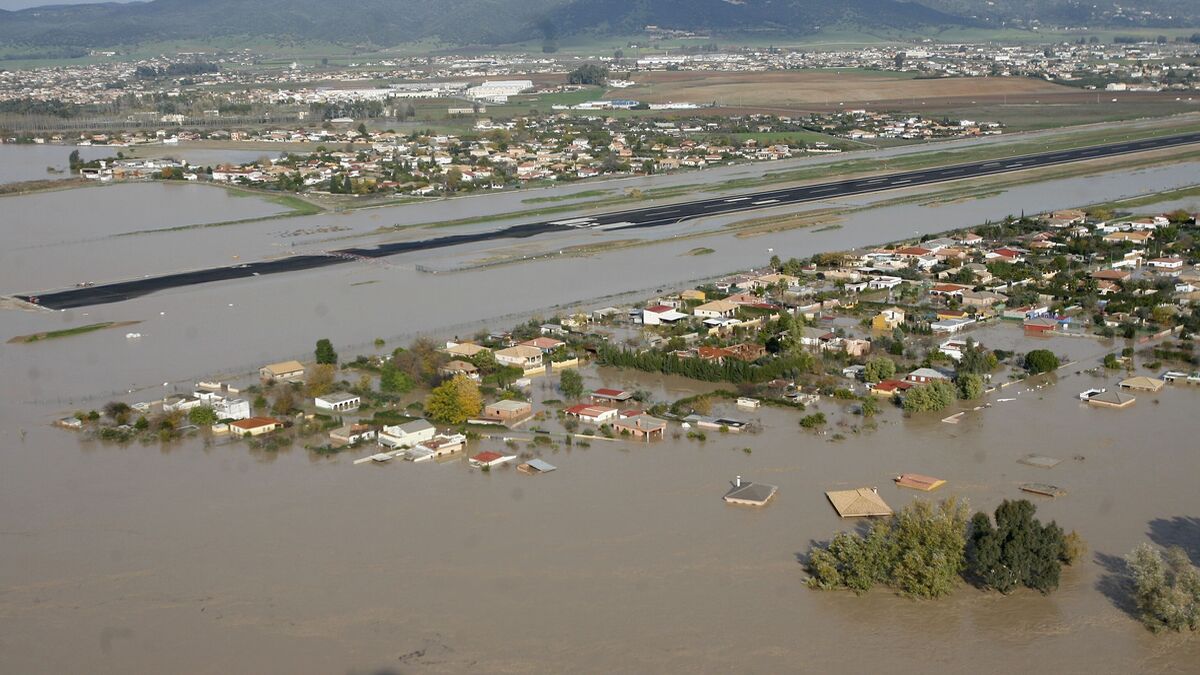The sea level does not stop rising and every time it does it faster. This is causing flood predictions in some cities to be highly worrying. We leave you some maps to check it.
The two main factors of the rise in the water level are already well known: CO2 emissions, which are still too high, and the melting of the polar ice caps, which ensures a continuous rise in water, and the maps that we show you corroborate this.
The scientific journal Nature recently published, specifically on November 9, 2022, the horrible news that Greenland’s glaciers are melting faster than previously thought which could cause the level of the sea rise much faster than estimated.
And it is that, one of the consequences of global warming that will have the most repercussions in the world and Spanish territory is the rise in sea level, as shown by some Map What are we going to show you? Sea level rise has been recorded since the beginning of the 20th century, estimating that the world average rise from 1900 to 2016 has been between 16 and 21 cm.
The big problem we are seeing is that the predictions that were made at one point about how the city of Venice is expected to be, for example, in the face of 2050, They are of little use and it is calculated that this whole process will speed up.
The rapid process of melting of the Greenland glaciers is the great actor in this increase in speed, although we already know who is (we are) to blame: human beings. With the threat of sea level rise clinging to our future, the need for solutions to climate change is more important than ever. We hope that solutions will be established at COP27.
For now, let’s take a look to the following maps and let’s consider different scenarios regarding the rise in sea level.
These are the sea level rise predictions: Venice, Amsterdam and Spain
One of the great losers at European level that we all know is Venice (Italy). And it is that, in the very near future, Venice faces a double threat: the sea level is rising and the city itself is sinking, two millimeters every year.
The Venetian capital has already been affected by flooding and it is likely that the climate change increase the frequency of high tides that submerge it. Like New Orleans, Venice has a flood defense system, but as the crisis worsens, it will become more difficult (and expensive) to maintain.
Amsterdam (Netherlands) is another of the big losers, raising the sea level by only 1 meter. And that, in reality, Amsterdam and the cities of Rotterdam and The Hague are located in a low and flat area, near the sea.
The Dutch are famous for their flood defenses, and based on sea-level projections, it looks like the country’s system of dikes, dams, and barriers will become even more essential in the coming years.
As for Spain, it is expected that Santa Cruz de Tenerife, in the Canary Islands, will experience a sea level rise of +81 centimeters in the next 80 years, the highest in our country. Cádiz (+75 cm) and Barcelona (+75 cm) will also be affected, and it is estimated that the beaches of the Catalan capital will lose between 6 and 10 meters of sand per year.
Some of the most important protected natural spaces in Spainthe Ebro Delta or the Doñana national parkthey also run the risk of suffering subsidence and flooding just by increasing the sea level by 1 meter, which if we combine it, the impact on the environment can be much greater.
In this other map, we can even see what year, business as usual or worse, we would see all these sea level rises. In addition, they add the risk that the regulations against CO2 emissions are drastic.
As you can see, sea level is expected to rise 1.5 meters by 2160 and that moderate reductions in emissions of CO2.
The general conclusion of the most realistic scenario what can we observe is that about 80% of the coastal cities analyzed in Spain will experience a rise in water level of more than 40 cm in 2080.
In addition, a new factor that makes the situation even more worrying is the strong cold drops, which cause floods and make riverbanks and coastal areas more vulnerable. An alarming situation not only for Spain but for many places in the world.
According to the IPCC, (Intergovernmental Panel on Climate Change), a low-emissions future could help reverse itBut coastal planning that takes into account the destructive nature of sea level rise on cities, beaches, or agriculture, thanks to data from these maps and others, will need to be on the long-term agenda.







![[Img #74664]](https://thelatestnews.world/wp-content/uploads/2024/12/James-Watson-The-controversial-genius-behind-the-double-helix-150x150.jpg)






![[Img #74664]](https://thelatestnews.world/wp-content/uploads/2024/12/James-Watson-The-controversial-genius-behind-the-double-helix-300x200.jpg)
